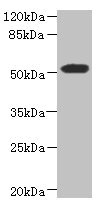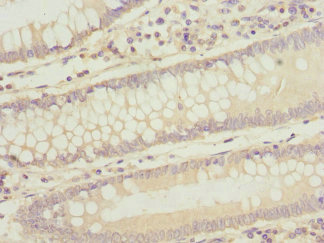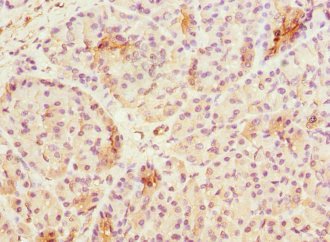Full Product Name
Rabbit anti-Homo sapiens (Human) ASPSCR1 Polyclonal antibody
Alternative Names
Alveolar soft part sarcoma chromosomal region candidate gene 1 protein antibody; Alveolar soft part sarcoma chromosome region candidate 1 (human) antibody; Alveolar soft part sarcoma locus antibody; ASPC antibody; ASPC1_HUMAN antibody; ASPCR 1 antibody; ASPCR1 antibody; ASPL antibody; ASPS antibody; ASPSCR 1 antibody; Aspscr1 antibody; FLJ45380 antibody; RCC 17 antibody; RCC17 antibody; renal cell carcinoma gene on chromosome 17 antibody; renal cell carcinoma papillary 17 antibody; Renal papillary cell carcinoma protein 17 antibody; Tether containing a UBX domain for GLUT4 antibody; Tether containing UBX domain for GLUT4 antibody; TUG antibody; UBX domain containing protein 9 antibody; UBX domain protein 9 antibody; UBX domain-containing protein 9 antibody; UBXD 9 antibody; UBXD9 antibody; UBXN 9 antibody; UBXN9 antibody
Immunogen
Recombinant Human Tether containing UBX domain for GLUT4 protein (284-553AA)
Immunogen Species
Homo sapiens (Human)
Purification Method
Antigen Affinity Purified
Concentration
It differs from different batches. Please contact us to confirm it.
Buffer
PBS with 0.02% sodium azide, 50% glycerol, pH7.3.
Tested Applications
ELISA, WB, IHC
Recommended Dilution
| Application |
Recommended Dilution |
| WB |
1:1000-1:5000 |
| IHC |
1:20-1:200 |
Storage
Upon receipt, store at -20°C or -80°C. Avoid repeated freeze.
Lead Time
Basically, we can dispatch the products out in 1-3 working days after receiving your orders. Delivery time maybe differs from different purchasing way or location, please kindly consult your local distributors for specific delivery time.
Usage
For Research Use Only. Not for use in diagnostic or therapeutic procedures.








